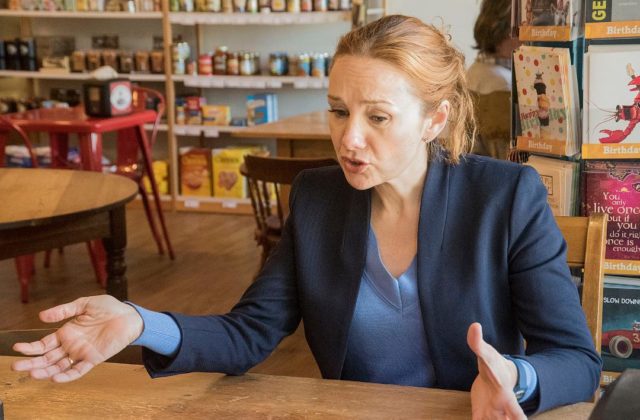Great Mountain Forest Hires New Executive Director
Tamara Muruetagoiena first came to Norfolk as a Yale forestry student
Text By Ruth Melville
Photo by Bruce Frisch
Great Mountain Forest’s new executive director, Tamara Muruetagoiena, has been a researcher, an international forestry consultant and a manager of research projects in the United States, the Basque Country and the Dominican Republic, but she is no stranger to the woods of Norfolk. During her time as a student at the Yale School of Forestry and Environmental Studies, she spent a week in GMF, where says she “fell in love with the place,” and subsequently worked as an instructor in the same program, living at the Yale camp for the summer.
Muruetagoiena didn’t start out to be a forester. After getting a bachelor’s degree in political science and a master’s in business administration, she became an adviser to the European Union (EU) parliament, working on environmental policy, agricultural policy and fisheries. She spent five years with the EU, hoping, she says, to “change the world through politics.”
Having hired many scientific experts in the course of her work, she realized that she’d actually like to have some of that expertise herself. “Policy is great, but I wanted to go deeper into the environmental science,” she says. She went back to school, first to do a one-year program in environmental biology at Columbia and then to get a master’s degree in forestry science at Yale, specializing in biodiversity in forest plantations.
After graduation, she stayed on at Yale, teaching classes and doing research. Every year Yale sends a class to a foreign country to do a “rapid assessment” of its forest. Muruetagoiena’s work with students in the Basque Country of Spain led to her coediting a book on the topic that is at the core of her environmental interests, and key to her current work at GMF—the multiple-use management of forests with multiple stakeholders.
In 2010 she got a call from Columbia University, asking her to become the manager of a multidisciplinary research center in a remote area of the Dominican Republic. This was her first experience in management, with oversight over research programs, staff and volunteers, and she realized that her call in the environmental world was to be a manager of people and resources.
Muruetagoiena has spent the last six and a half years working for the international food company Driscoll’s, the world’s largest seller of fresh berries, who hired her to lead their sustainability department. The job appealed to her because is offered a new challenge, a chance to encourage sustainability in the very different world of large-scale industrial agriculture. “There was a lot of demand at the time to demonstrate what Driscoll’s was doing in sustainability,” she says. “Questions about the use of water, plastic and pesticides were hot topics.”
Her time at Driscoll’s gave her a new perspective on the environmental field, but eventually it was time to move on. She knew she wanted to be an executive and to be in an organization where sustainability was the core mission, not just an add-on. She also wanted to work in a place that meant something to her, a place where efforts to tackle the problems of adapting to changes in the environment were front and center.
Returning to GMF seems to Muruetagoiena like coming full circle. She remembers her earlier time at GMF as the best job she’s ever had, and she appreciates that the forest is so tied to the town and its history. “It’s like an incredible jewel,” she says, “a little untapped, a little hidden.”
Although she’s only been on the job for a few weeks, her first impression is that the forest has done a good job of linking with the town. But she would like to expand that reach, to encompass the state, the country, the world. The burning of the Amazon is in the news right now, but she says that the “little Amazons” —like GMF—also crucially need protection.
Part of her role as executive director is to create a vision and a strategy for how GMF works with the town. What is the best way for GMF to accommodate both visitors’ recreational needs and the needs of a working forest? She wants to take a look at what other forests have done to successfully strike a balance between competing demands.
So far her time in Norfolk has been engaging and intense. She’s been meeting her staff and getting to know them. It is of foremost importance to her to have a good working relationship with staff members, and they in turn have been introducing her to the community.
John Coston, chair of the board of Great Mountain Forest, says the organization is excited about Muruetagoiena talking over executive director. “GMF is committed to expanding its role as a model of best forestry practices, managing the forest as a renewable resource, as a habitat for wildlife and as a classroom for training and education. GMF also is a public-access resource for those who love the woods, and as a skilled communicator, Tamara will proactively reach out to build new relationships in the community.”

